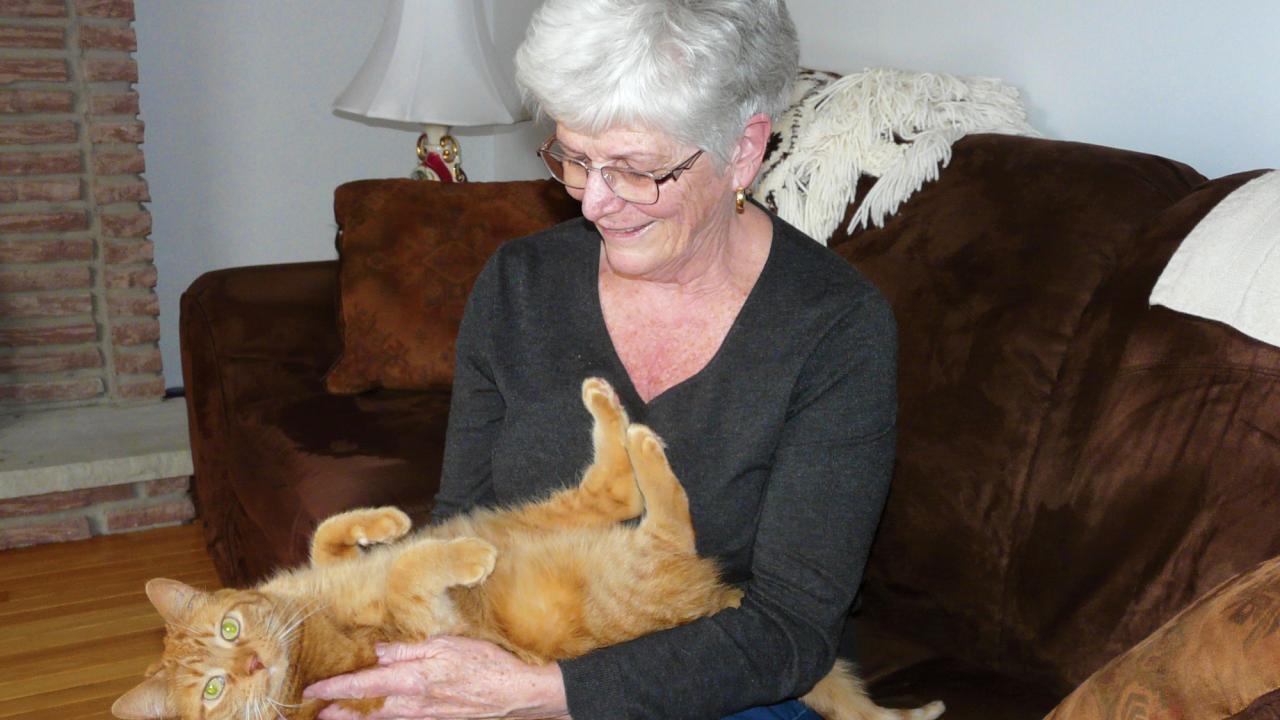
Why Therapy Cats are Just as Effective as Therapy Dogs
This article written by Vivien Fellegi for Modern Cat
A gangly grade six girl rushes into the seminar room at a Peel region school outside Toronto, Ontario, where Molly the therapy cat is holding court. Allison (not her real name) hasn’t seen the cat since the last term and isn’t sure the animal will recognize her. “Hi Molly,” she says and kneels down on the cat’s fuzzy red blanket. Molly’s head quickly turns at the sound of the student’s voice. She bounds towards the girl and greets her by placing her paws on the child’s legs. “She remembers me,” says Allison. Her voice is wispy with wonder.
Allison sits down beside the cat and begins scratching her ears. The animal cuddles closer. “Molly missed you,” says her owner, retired nurse Cathy James.
Molly belongs to the Therapeutic Paws of Canada’s Paws To Read division, an educational program that arranges weekly visits with cats or dogs for children with emotional challenges or reading difficulties. Molly is an anomaly in the therapy animal circuit dominated by dogs—she’s one of only 16 feline teams in Canada (compared to 570 canine counterparts). In the US, Pet Partners is the largest therapy pet organization in operation. 94 percent of their therapy animals are dogs, and the rest are cats and other animals. On the whole, dogs are better suited to be therapy animals than cats. They’re generally more gregarious and less stressed by leaving their home territory, says behavioral biologist Dennis Turner, director of the Institute for Applied Ethology and Animal Psychology in Zurich, Switzerland.
But while fewer felines make the cut, cats with an outgoing temperament are as effective as canines. “Cats can form powerful social bonds as strong as dogs and can serve as emotional supports if you earn their affection,” says Dennis. As research on the cat-human bond is exploding, it seems to be in line with Dennis’s views. According to one Australian study, cat owners were happier, more confident, and generally psychologically healthier than those without pets. And though most of these papers have focused on the advantages of companion animals, these benefits likely apply to visiting therapy cats, says Dennis. “That’s most probable since over a longer period the cat and the client will develop a relationship,” he says.
Allison has blossomed under Molly’s nurturing wing. She doesn’t fit in well with her classmates, and struggles academically, says teacher Angela James-Harris, who organizes the Paws To Read program at the school (and happens to be Cathy’s daughter). But the cat doesn’t care about her grades or her popularity. “Molly gives her positive attention—it’s made a big difference to her self-esteem,” says her teacher. Allison leaves the sessions happier and mingles more with her peers afterward.
Allison’s positive response to Molly isn’t unusual. Lynette Hart, Professor at the UC Davis School of Veterinary Medicine, has studied the pluses of pet ownership. Our emotional wellbeing depends on the quality of our personal relationships, she says. Attachment figures make us feel secure and provide a safe haven from which to explore the world. Companion animals, who love us unconditionally, can sometimes step into this role when human supports are lacking, says Lynette.
Lynette sheds light on this phenomenon in a 2018 study of children living with autism and their cats. 30 percent of the kids seemed to be glued to their pets. These animals greeted the children at the door, followed them around, and slept in their beds at night. The cats’ affection seemed to rub off on many of the youngsters, who began to engage more with their families. One girl, who didn’t like to be touched, began holding her mother’s hand when the cat lay in the child’s lap. The animals’ acceptance might have fostered these transformations, says Lynette. “The cats didn’t see their differences and treated them like anyone else,” she says. “That was affirming.”
